Hallo Deutschland! Munich and the Marienplatz
Having had the pleasure of exploring three kingdoms so far (Polish, Magyar-Hungarian, and Austrian), we decided to take a detour to Western Europe and explore an old kingdom in one of Europe's most historically fragmented states, Germania. At its peak, the German Confederation was a loose association of 39 Germanic states including the Kingdoms of Prussia (Berlin), Saxony (Dresden), Hanover (Hanover), Wurttemberg (Stuttgart), and Bavaria (Munich).
Since we could only choose one Germanic city, we went for the area with the most castles, traditional villages, sausages, and beer, the home of the Oktoberfest, Munich!
* Arriving at the Marienplatz which has been Bavaria's main square since 1158!
* The Kingdom of Bavaria existed from 1806 to 1918 and was the second largest Germanic State next to the Kingdom of Prussia (Berlin).
* If it's THIS Gothic, it HAS to be Germania!
* While there's nothing new about it all, the New Town Hall, built in 1867, contains the seat of the city government and is well known by tourists for being extremely photogenic.
* In the Middle Ages, the city square was a typical medieval melting pot, complete with a marketplace, various stores, and an area for holding tournaments.
* Which is commemorated to this day, by the Rathaus-Glockenspiel (clock tower) containing the area's most beloved tourist attraction, a reenactment via cuckoo clock figures of a royal wedding featuring a jousting tournament (top), and the plague dance of a group of copper merchants (bottom).
* The couple enjoying the spectacle, which occurs everyday at 11am, 12pm, and 5pm.
* Here's a short clip of the performance!
* Marienplatz is named after the Virgin Mary, who is also honored by a Marian Column set in the middle of the square. Erected in 1638 to celebrate the end of Swedish occupation during the Thirty Years War, the column is topped by a golden statue of the Virgin.
* Walking around the square, while admiring the Gothic architecture.
* This very well could have been the setting of some Lord of the Rings / Harry Potter movie!
* Such an impressive entrance to what is most probably a regular office.
* Ratskellers are located all over German-speaking countries and is a term used to describe bars and restaurants located in the basement of government buildings.
* This one, located under the New City Hall, is popular for serving regional dishes and showcasing classic Bavarian decor.
* Walking along the Kaufingerstrasse, which is one of the oldest streets in Munich and is its main shopping street.
* High-end shoppes and boutiques of both a German and foreign flavor line both sides of the street.
* And like most Europeans, Germans are dog lovers; bringing their friends along when they go shopping.
* Very good lighting, this city!
* The Frauenkirche (Cathedral of our Dear Lady) is the seat of the Roman Catholic Church here in Bavaria and was built in 1494.
* Governed by the Archbishop of Munich and Freising, the Cathedral's most famous son is the retired Pope Benedict XVI, Joseph Ratzinger.
* Severely damaged during World War II, much of the Cathedral is bare and contains minimal decors.
* What it lacks in style though, it compensates with its immense scale. Check out how high the ceiling is!
* Reminiscent of the Habsburg Crypt in Vienna, the Cathedral contains this Sarcophagus of Louis IV, Holy Roman Emperor.
* Apart from Louis, the Cathedral also contains the tombs of various members of the House of Wittelsbach, including 10 Dukes and King Ludwig III, the last King of Bavaria, and descendant of both William the Conqueror of England and Louis XIV, the Sun King.
* Another view of the grand scale of the Church, with its hanging Crucifix.
* A landmark to take note of inside the Cathedral is this foot-shaped mark found by the entrance. Known as the "Devil's Footstep", the mark survived the massive bombing of the Cathedral during World War II.
* Legend states that the Devil stood on that spot to mock the architect of the Cathedral, Jorg von Halsbach.
* As he was not able to enter, the Devil furiously manifested its spirit in the wind which, strangely and curiously to this day, blows strongly around the church.
* These patrons don't seem to mind though, as numerous restaurants, bars, and cafes are located in the Cathedral's perimeter.
* At night, Marienplatz is even more stunning and grand! Perfect for strolling and people watching.








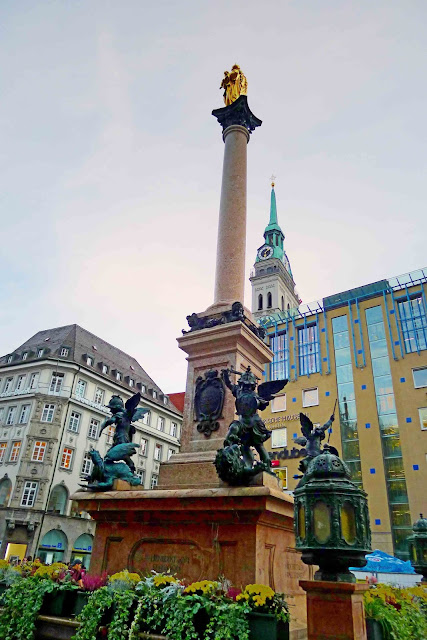
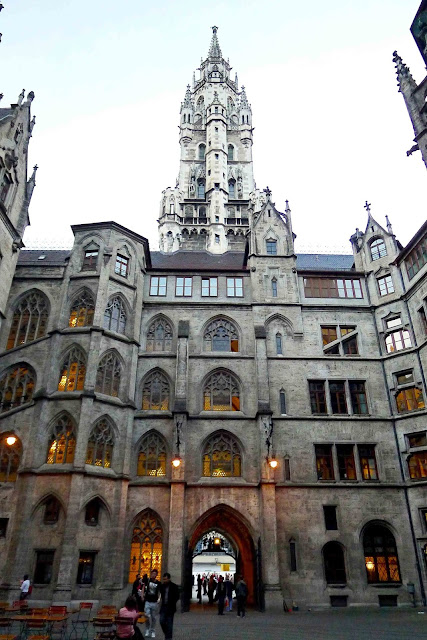

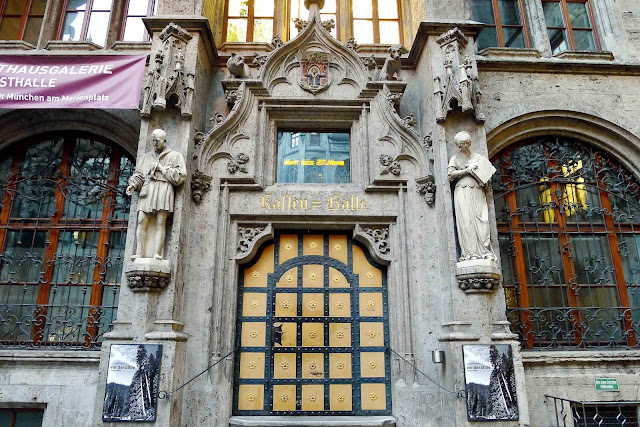


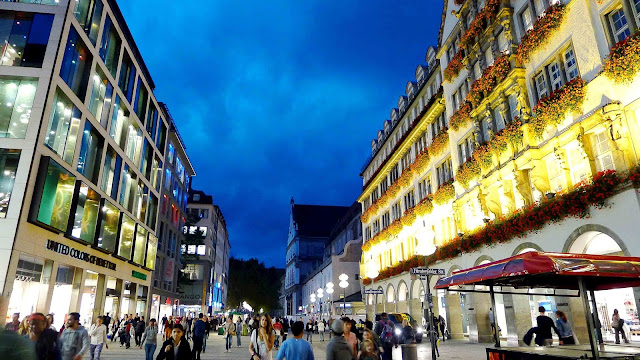
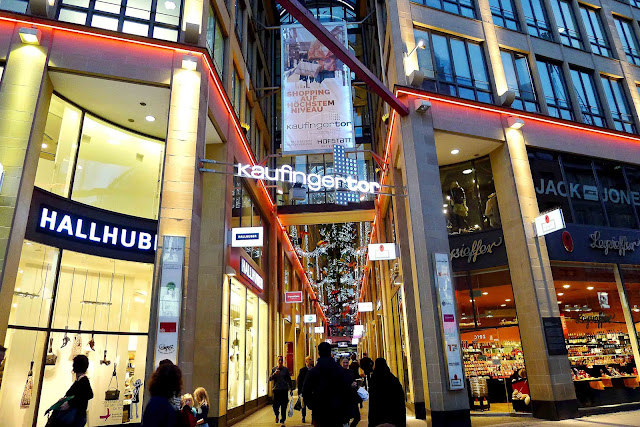


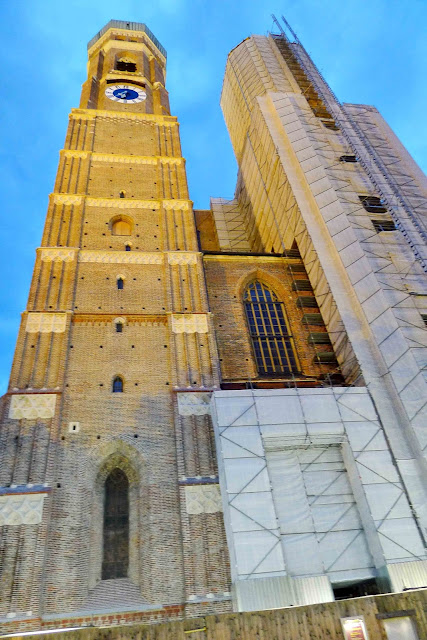

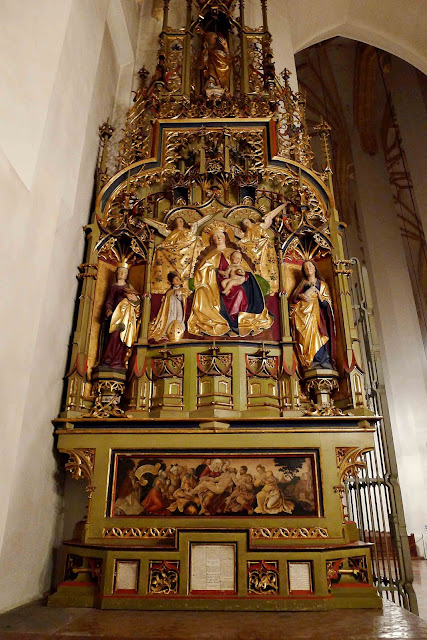




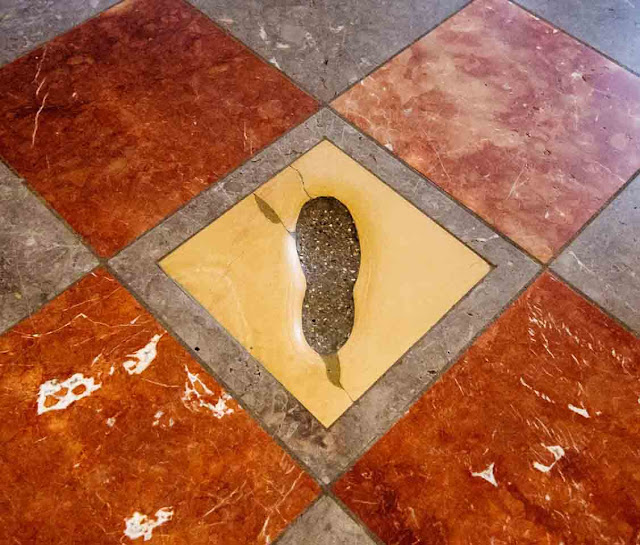




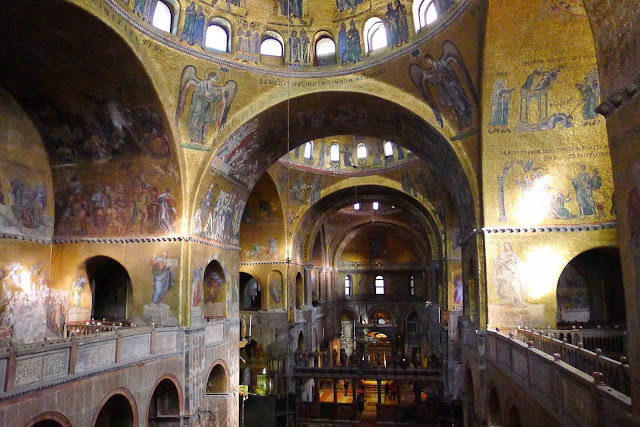


Comments
Post a Comment